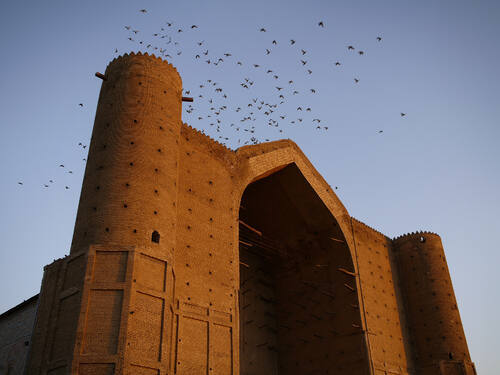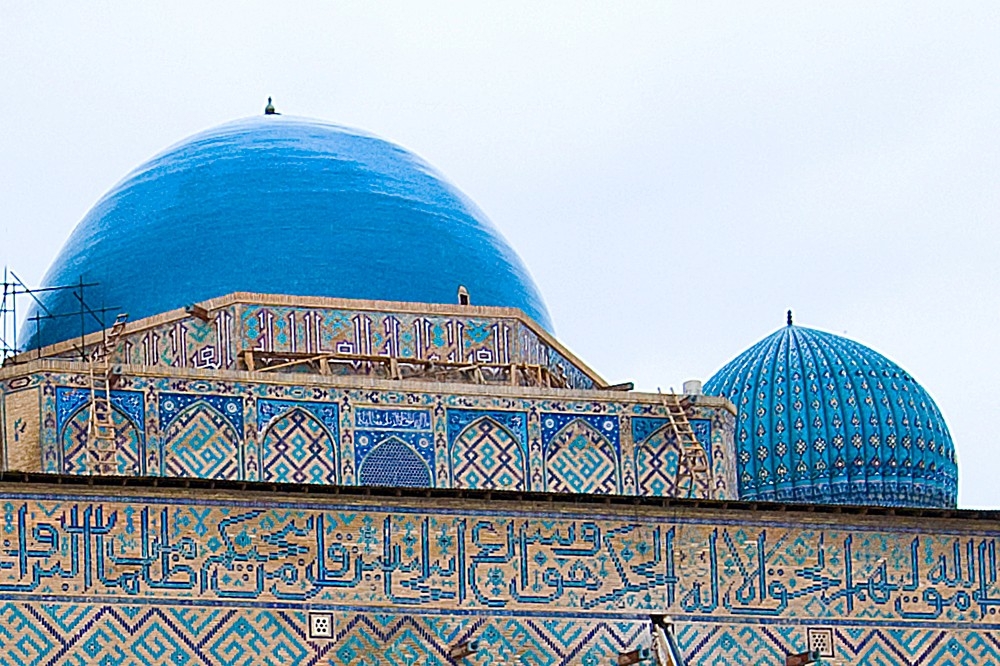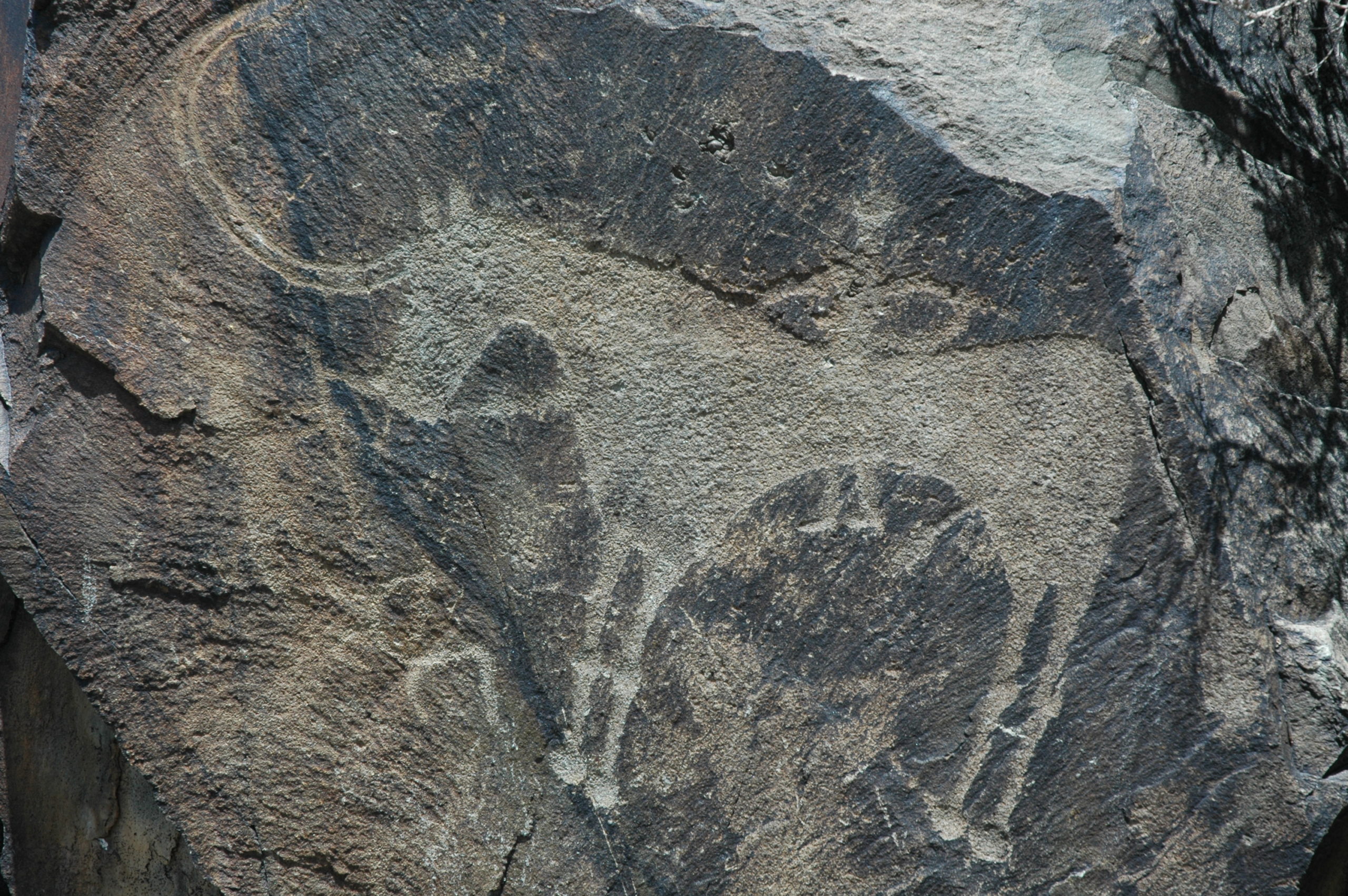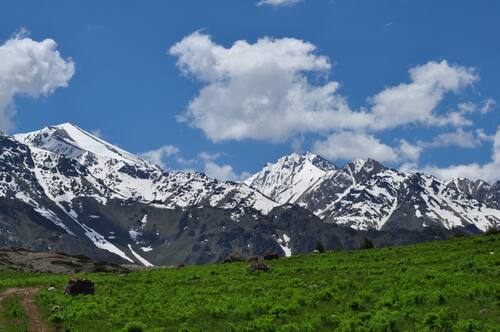NUR-SULTAN – Twenty-three years ago in February, then Kazakh President Nursultan Nazarbayev signed a state program into existence to revive the historical centers of the Silk Road, preserve and promote the cultural heritage of Turkic-speaking states, and build tourism infrastructure around the places once passed by the Great Silk Road.

Mausoleum of Khoja Ahmed Yassawi. Photo credit: Amos Chapple/World Heritage Convention. UNESCO
Twenty-three years on, the goal still remains relevant for Kazakhstan both for economic and cultural purposes, as the country celebrates the 30th anniversary of its independence this year.
Economically, the Silk Road revival allowed the country to benefit from its strategic geographic location capitalizing on revenues from increased exports and investments made in transport infrastructure. In 2012, Nazarbayev presented the New Silk Road project at the Foreign Investors’ Council meeting, where he said that “Kazakhstan should revive its historical role and become the largest business transit hub of the Central Asian region, a kind of bridge between Europe and Asia.”
Culturally, some of the major sights that were part of the old Silk Road are now inscribed in the UNESCO (United Nations Educational, Scientific and Cultural Organisation) World Heritage list.
Overall, Kazakhstan currently has three cultural and two natural UNESCO sites which are being developed as tourist destinations.
Khoja Akhmed Yassawi mausoleum
The mausoleum was included in the UNESCO world cultural heritage list in 2004.
The mausoleum was built between 1389 and 1405 during the reign of Tamerlan (Timur), once a powerful ruler of Central Asia.

Mausoleum facade. Photo credit: Ko Hon Chiu Vincent/ World Heritage Convention, UNESCO
Though the building was left unfinished after the death of Timur, it remains a masterpiece of medieval architecture, where Persian craftsmen experimented with different techniques that were later used in other buildings in the Timurid period, including in the construction of Samarkand.
Prominent Kazakh leaders such as Abulkhair Khan, Abylai Khan and Yessim Khan, as well as Kazakh judge Kazbek-bi, one of the three key judges of the Kazakh Khanate, are buried inside the mausoleum.
The architectural complex that consists of spacious 35 rooms is revered among Muslim pilgrims throughout Central Asia, as many seek to commemorate Yassawi, an influential Turkic Muslim religious scholar and mystic who founded the Yassawiya order of Sufis.
The mausoleum has undergone a renovation as part of the major works in the city of Turkestan. New botanical garden now surround the complex.
Petroglyphs of Tamgaly
The Petroglyphs of Tamgaly that were also included in the list in 2004 are located 170 kilometres northwest of Almaty in the southeastern part of the Chu-Ili Mountains.

Petroglyphs of Tamgaly. Photo credit: Ron Van Oers/ UNESCO
They include nearly 5,000 rock carvings that picture animals, hunting rituals and sun deities dated back to the second half of the second millennium BC to the early 20th century.

Petroglyphs of Tamgaly. Photo credit: Ron Van Oers/ UNESCO
The place will be of great interest to people who want to explore the culture of civilizations that once inhabited the Great Steppe.
Chang’an-Tian-shan Silk Road Corridor
The Chang’an-Tian-shan Silk Road Corridor covers 5,000 kilometers stretching across China, Kazakhstan and Kyrgyzstan. It was once part of the Great Silk Road and was actively used from the 2nd century BC until the 16th century AD linking merchant caravans and vibrant communities and cultures. It was included in the UNESCO list in 2004.

Initial Section of Tian Shan Corridor. Photo credit: Valery Kolchenko/ UNESCO
“The merchants that traveled these routes brought not only new merchandise but new cultures, skills, beliefs, and languages into the regions that lay along the Silk Roads. The Chang’an-Tian-shan corridor is lined with monuments reflecting the cultural, intellectual and scientific exchanges that took place along this route across history with 33 different sites now being recognized by the UNESCO World Heritage Committee, including capital cities, palaces, Buddhist cave temples, caravanserais, beacon towers, sections of The Great Wall, fortifications, tombs and religious buildings. Buddhism, in particular, was disseminated across western and central China, as witnessed by the construction of pagodas, cave temples and Buddhist monasteries in regions surrounding the corridor,” read the article published on UNESCO Silk Roads program website.
In 2014, eight Kazakh locations were included on the UNESCO World Heritage List as components of the site – the ancient Karamergen, Kayalyk and Talgar settlements in the Almaty Region and ancient Aktobe, Akyrtas, Kostobe, Kulan, Ornek and Stepninskoye settlements in the Zhambyl Region.
Saryarka – Steppe and Lakes of Northern Kazakhstan
This entry into the World Heritage List includes the Naurzum State Nature Reserve and Korgalzhyn State Nature Reserve with a total area amounting to 450,344 hectares.
These areas are known to be an important destination for migratory waterbirds, including the rare Siberian white crane, curly pelican, and long-tailed eagle.
They are the home of approximately half of the species of steppe fauna, including the endangered saiga antelope.
The areas also include two groups of lakes with salt and freshwater, which have contributed to the diversity of flora and fauna adapted to different types of water.
Western Tien-Shan
The Western Tien Shan includes 11 sites that are part of seven specially protected natural areas in three countries – Kazakhstan, Kyrgyzstan and Uzbekistan. Kazakhstan is represented by the Aksu-Zhabagly and Karatau state reserves and Sairam-Ugam National Park.

West Tian Shan. Photo credit: climberca.com


